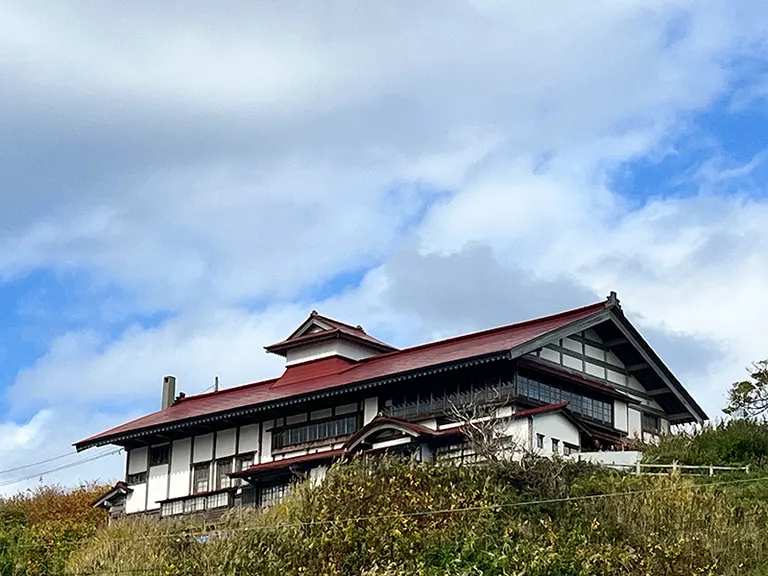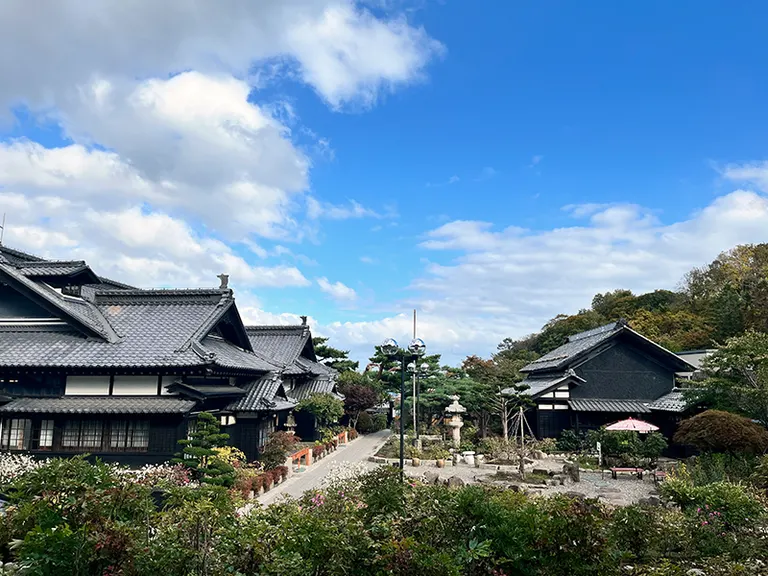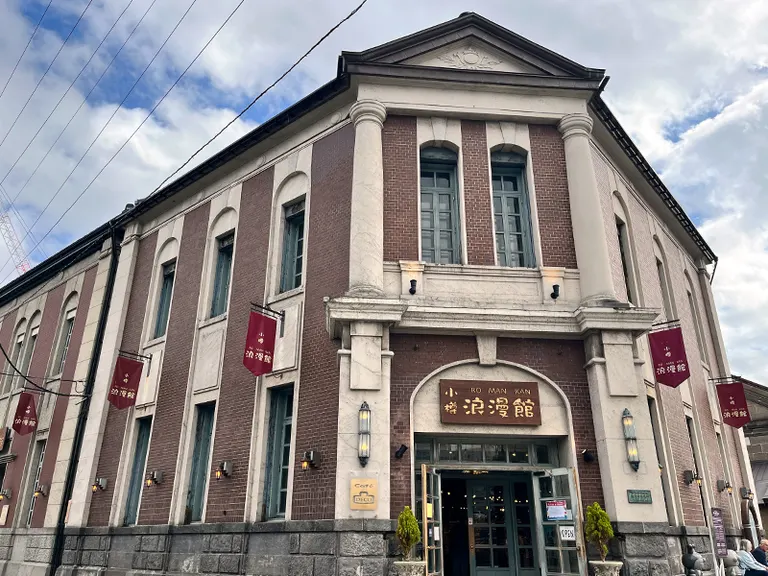
ARTICLES
Must-see for fans! 7 "Golden Kamuy" pilgrimage spots in Otaru
Golden Kamuy is a popular manga by Satoru Noda set in Hokkaido during the Meiji period, depicting a battle for a gold nugget believed to have been left behind by the Ainu people. The total number of copies of the series has exceeded an astonishing 29 million (as of August 2024), and the live-action film released in January 2024 was a huge hit, grossing 3 billion yen. The drama series, which has been airing on WOWOW since October of the same year, is also a hot topic. A pilgrimage to the sacred sites of Otaru, the setting of the story, is a great way to experience the world of Golden Kamuy even more deeply. In this article, we will introduce the sacred site pilgrimage spots in Otaru city in detail!
- You can also find Noda Sensei's autograph! Learn about Otaru in the Meiji period at the Otaru City Museum Canal Hall
- The most unique area in the series! The famous scene with Henmi-chan is brought back to life in the "Shukutsu Area"
- The Former Aoyama Villa: A luxurious residence that captures the glory of herring fishing
- There are other famous sacred places such as "Otaru Romankan", "Taisho Glass Museum Main Store", and "Otaru City Museum Main Building"
- End the day with a sweet treat at the "Shinkuraya Hanazono Main Branch"
You can also find Noda Sensei's autograph! Learn about Otaru in the Meiji period at the Otaru City Museum Canal Hall

The first place we recommend you visit is the Otaru City Museum Canal Hall, located along the Otaru Canal. There are plenty of documents and exhibits about the history and nature of Otaru, which prospered during the Meiji period through finance and herring fishing. "Otaru in the late Meiji period has a strong image as a financial district, but it was also a motley, anarchic, energetic town where many roughnecks gathered in hopes of getting rich quick," says museum director Ishikawa Naoaki. By learning what Otaru was like in the Meiji period, including photographs of the old streets and tools used at the time, you will be able to gain a deeper understanding of the world of "Golden Kamuy."

Approximately 20,000 items are on display, showcasing Otaru's history from the Ainu era to modern times.

Photos of the old Otaru streetscape were used as production material for Golden Kamuy

Many herring fishing gears that appeared in episode 2 of the drama are also on display.

In the production of the manga, movies, and dramas, the author, Noda Satoru, as well as the anime and live-action staff, visited the museum and thoroughly researched real materials from the Meiji period. Director Ishikawa was surprised at their dedication, saying, "They researched so thoroughly." The donated autographed colored paper by Noda Satoru is on irregular display for a limited time to prevent fading. The current display is scheduled to run until January 22, 2025 (Ogata Hyakunosuke's birthday).

In addition to the colored paper, the film script and the Ainu costume "tetarape" are also on display.

■Address: 2-1-20 Ironai, Otaru City ■Admission fee Adults: 300 yen, high school students and city residents aged 70 and over: 150 yen, junior high school students and younger: free Opening hours: 9:30-17:00 ■Closed: New Year's holiday period
Click here for details and maps of "Otaru City Museum Canal Hall"
The most unique area in the series! The famous scene with Henmi-chan is brought back to life in the "Shukutsu Area"

The Shukutsu area, a 20-minute bus ride from downtown Otaru, is dotted with locations used in the second episode of the drama. The herring fishing grounds where tattooed prisoner Henmi Kazuo worked were filmed in front of the popular seafood restaurant Aozuka Shokudo. Filming also took place at Otaru City Herring Palace on a small hill, but it is currently closed and cannot be entered.

The Herring Palace is a historical building designated as a tangible cultural property by Hokkaido.
The "Old Shiratori Family Guard House," located right next to the Herring Palace, is also a spot that appeared in the drama. You can view the exterior, and filming took place in the rugged Maehama area, so you can take a stroll and reminisce about the drama's scenes. Also nearby is the "Otaru Aquarium," which is recommended for visiting in combination with other sightseeing.

The former Shiratori guardhouse is a historic building designated by Otaru City and built in the 1870s.
The Former Aoyama Villa: A luxurious residence that captures the glory of herring fishing

About a 10-minute walk up the mountain from Shukutsu Beach, you will find the "Nishin Goten Otaru Guest House." Within the grounds of this building is the "Former Aoyama Villa," the interior of which is open to the public for a fee. In the original work, it appears as the luxurious mansion of the herring fishing boss where Henmi was employed. It was the model for the room where Lieutenant Tsurumi played the piano, the dry landscape garden depicted on the back cover of volume 4 of the manga, and the luxurious toilet that surprised Asirpa.
*The "ri" in Asirpa's name is lowercase

A magnificent dry landscape garden and a luxurious wooden mansion

The "Hidai Tenrai Room" on the second floor of the annex was the model for the original story.

The Arita porcelain toilet that Asirpa was amazed by its beauty. *The "ri" in Asirpa's name is lowercase.
The Former Aoyama Villa was built as a vacation home for the Aoyama family, who amassed vast wealth from herring fishing during the Meiji and Taisho eras, and is a registered tangible cultural property of the country. It is said to be one of Hokkaido's most luxurious art mansions, and the interior is lavishly furnished with high-quality woods such as zelkova, cypress, sandalwood, and rosewood, as well as works by famous painters and calligraphers. The building and furnishings are well worth seeing, and it is recommended for anyone with an interest in architecture and art. Please note that taking photographs is prohibited during public tours.

The interior decoration of the building, including the transoms, beams and pillars, is a magnificent example of the skills of palace carpenters.

At the adjacent restaurant, you can enjoy herring soba noodles while looking out at the courtyard.

■Location: 3-63 Shukutsu, Otaru City ■Admission fee Adults (junior high school students and above) 1,300 yen, elementary school students 650 yen, preschoolers free Opening hours: November to March: 9:00 to 16:00, April to October: 9:00 to 17:00 ■Closed: January 1st to 7th
Click here for details and maps of "Otaru Guest House (Former Aoyama Villa)"
There are other famous sacred places such as "Otaru Romankan", "Taisho Glass Museum Main Store", and "Otaru City Museum Main Building"

Otaru Romankan is located along Otaru Sakaimachi Hondori, a street bustling with tourists. Many fans will recognize the building from its exterior. Yes, this is the model for the bank that Hijikata Toshizo attacked in the original novel and film to retrieve his beloved sword, Izuminokami Kanesada, and inside is a shop selling accessories and glass goods. The fire wall "udatsu" that appeared in the original novel is located at the Taisho Glass Museum Main Store. The Natori Kozaburo store, built in 1906, has been renovated and handmade glassware is displayed and sold here.

The wall rising up on the left side of the building is a type of fire wall called "udatsu."

If you have time, we also recommend stopping by the Otaru City Museum Main Building. It's about a 20-minute walk from the Canal Museum mentioned at the beginning of the article. Here, you'll find the steam locomotive "Shizuka," a must-see for fans of the original work. This model of the steam locomotive in which the deadly battle unfolds at the climax of the story brings to life the final battle between Hijikata, the 7th Division, and Sugimoto.

■Location: 1-25 Sakaimachi, Otaru City ■ Business hours: 9:30-17:30 ■Closed: Open everyday

■Location: 1-1-8 Ironai, Otaru City ■ Business hours: 9:00-19:00 ■Closed: Open everyday
Click here for details and map information for "Taisho Glass Shop Main Store"

■Location: 1-3-6 Temiya, Otaru City ■Admission fee Adults: 400 yen (300 yen in winter), high school students and city residents 70 years and older: 200 yen (150 yen in winter), junior high school students and younger: free Opening hours: 9:30-17:00 ■Closed on: Tuesdays (or the following weekday if the Tuesday is a public holiday), New Year's holiday
Click here for details and map information for "Otaru City Museum Main Building"
End the day with a sweet treat at the "Shinkuraya Hanazono Main Branch"
And for the final stop on your Golden Kamuy pilgrimage, be sure to visit Shinkuraya Hanazono Main Branch in Hanazonocho. Hanazono dango appears as an important prop in the scene where Lieutenant Tsurumi interrogates Sugimoto. There is a cafe space inside the store, so why not end your Golden Kamuy journey by eating the famous Hanazono dango?

The small, soft dumplings are priced at 400 yen each and come with tea.

■Location: 1-3-1 Hanazono, Otaru City ■ Business hours: 9:30-18:00 ■Closed on Thursdays
Click here for details and map information for "Shinkuraya Hanazono Main Store"
Writer Profile
Editor & Writer Yuka Takashima
After working at an advertising agency and then at a magazine editorial department, he became a freelance editor and writer. He writes for travel magazines, home building magazines, music articles, and various advertising articles. A Hokkaido native living in Sapporo who loves to eat delicious food.












